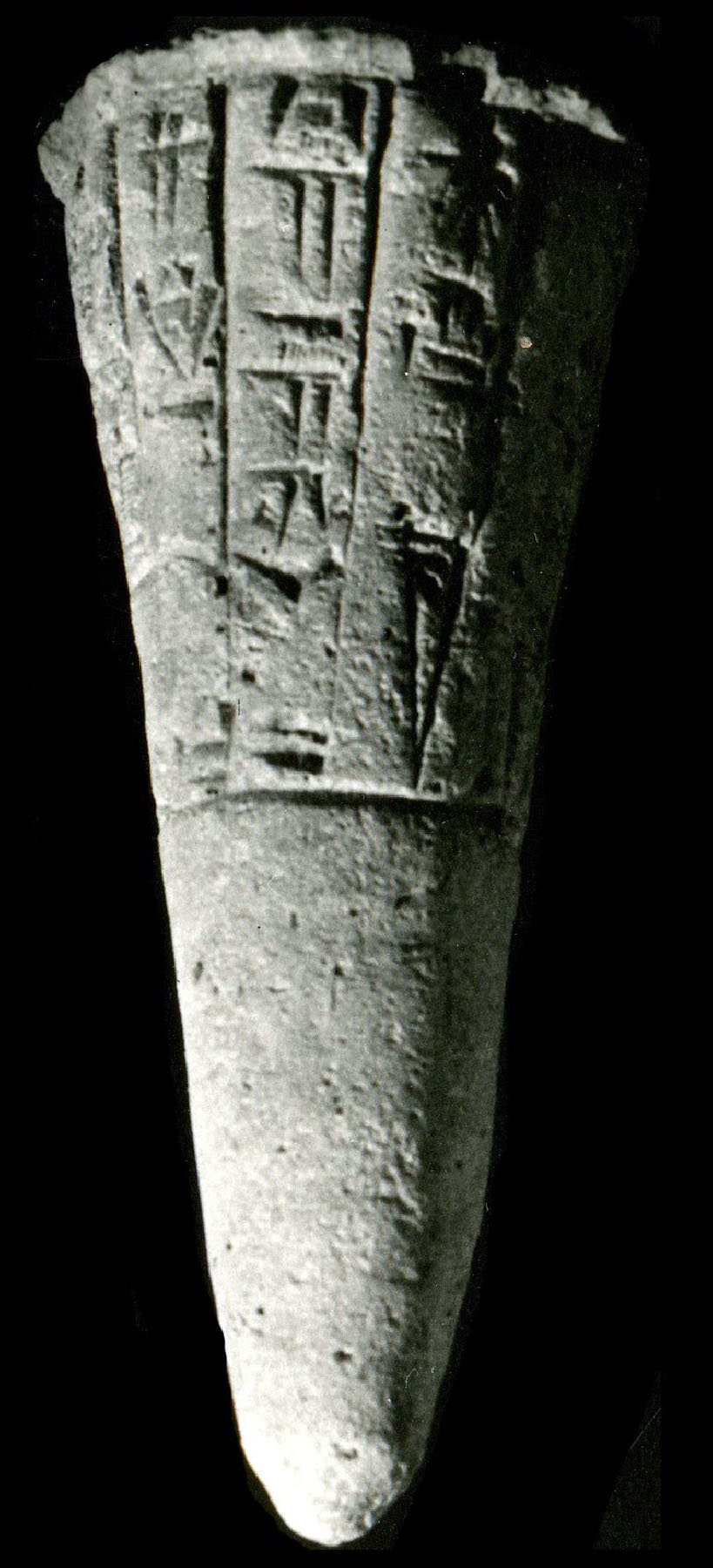Nail of Gudea
(Ancient Near East )
The impressed cuneiform characters, which are well-spaced in the horizontal registers on the shaft of this votive nail, record in Sumerian the building of a temple in Girsu (modern Tell Telloh) for Ningeshzida, a deity of the underworld, by Gudea, ensi of Lagash. Girsu was an important religious and civic center in the 3rd millennium BCE. Gudea ruled over the city-state of Lagash (in southern Iraq) in the second half of the 22nd century BCE (ca. 2144-2124 BCE). In this text, Gudea draws attention to his personal connections to two deities: Ningeshzida, his patron, and Gatumdu (or Gatumdug), a goddess local to Lagash. Over one hundred examples of this text are known, appearing mostly on clay nails.
Clay cones and nails were inscribed in the name of a ruler of a Mesopotamian city-state to commemorate an act of building or rebuilding, often of a temple for a specific deity. Deposited in the walls or under the foundations of these structures, the words of the texts were directed at the gods but would be found by later restorers.
Inscription
Provenance
Provenance (from the French provenir, 'to come from/forth') is the chronology of the ownership, custody, or location of a historical object. Learn more about provenance at the Walters.
Edgar J. Banks, Alpine, New Jersey, [date and mode of acquisition unknown]; Henry Walters, Baltimore, 1929 [mode of acquisition unknown]; Walters Art Museum, 1931, by bequest.
Conservation
| Date | Description | Narrative |
|---|---|---|
| 1/29/1974 | Treatment | stabilized |
Geographies
Iraq (Girsu) (Place of Origin)
Measurements
H: 5 11/16 × Diam: 2 7/16 in. (14.4 × 6.2 cm)
Credit Line
Acquired by Henry Walters, 1929
Location in Museum
Not on view
Accession Number
In libraries, galleries, museums, and archives, an accession number is a unique identifier assigned to each object in the collection.
In libraries, galleries, museums, and archives, an accession number is a unique identifier assigned to each object in the collection.
48.1459


